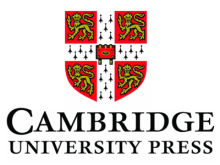Resource information
Urbanization represents the most extreme form of land cover transformation and is expected to restrict dispersal of animals, both because of the structural unsuitability of the novel habitat, as well as through mechanisms associated with human activity, such as disturbance. Fragmentation of populations by urbanization is considered to be a significant threat to several endangered bird populations, although isolation has seldom been demonstrated genetically. The aim of this study was to explore the utility of genetic criteria for identifying at‐risk populations, using a salt‐marsh‐inhabiting bird, the white‐fronted chat Epthianura albifrons, as a case study. DNA was extracted from feathers from 78 individuals from five sites, including two salt marsh remnants situated within the intensively urbanized zone of a city of more than three million people, and three sites up to 500 km distant. Microsatellite markers were used to measure genetic diversity and compare genetic structure between populations. Analyses of population structure demonstrated that the two populations surrounded by intensive urban development were genetically distinct from each other despite being separated by less than 20 km. They were also distinct from larger populations beyond the urban zone that showed much lower levels of genetic differentiation and no evidence of isolation by distance, despite being separated by continuous forest, which is not a recognized habitat for this species. The two endangered populations had low levels of genetic diversity reflected in the number of alleles and heterozygosity. Two immigrants were detected in one of the isolated populations, but their reproductive success was very low and they failed to effect genetic rescue. This study demonstrates that the endangered population satisfies the genetic criteria for listing, and although the population is unlikely to have special evolutionary significance in itself, flagging the population highlights the vulnerability of some coastal fauna to the impacts of urbanization.



